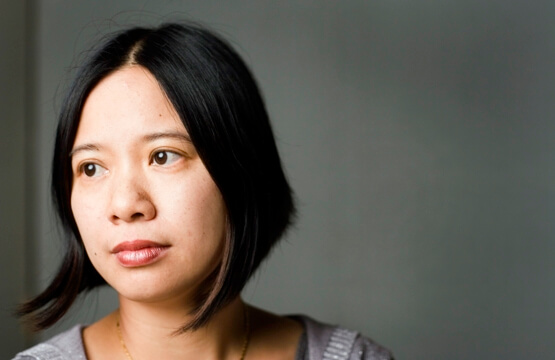“The Forest Speaks” invited the counsel nature might have for humans through the work of three contemporary women composers. The August 14, 2017 Mostly Mozart concert was preceded by a festival focus on Schubert, and the International Contemporary Ensemble wanted to move beyond nature as mere backdrop for a male Romantic type. In the post-concert panel, ICE founder and flutist Claire Chase asked what the “sentient intelligence” of forests might have to teach us, and how could an ensemble be more like a forest? Pauline Oliveros, Anna Thorvaldsdottir, and Liza Lim’s works interpreted nature’s voice in wildly different yet expansive meditations.
Pauline Oliveros’ Earth Ears: A Sonic Ritual (1982-85) set the philosophy of the evening’s program. Oliveros built community through music making and had created a collection of Sonic Meditations for group practice. Earth Ears transposed these ideas into a polished concert setting and inverted the mark of excellence from sound production to listening ability. Chase later revealed that ICE decided the day of performance to perform without scores. They filled the stage in a symphonic semicircle including piano, strings, accordion, flutes, standup bass, xylophone, saxophone, horn, and percussion. Each player chose a simple pattern of sound and silence on their instrument. Gradually, the patterns expanded in tandem and formed an interlocking structure through cycles of pattern, transition, and change. Like a natural day, the energy of the piece arced from dawning taps on the piano and xylophone showers through sneezing accordion bursts before cadencing to silence. The players listened in different ways: the flutist and accordionist engaged eye contact and laughter; the horn player focused by keeping eyes closed. The cellist offered some surprising metallic string snaps to break his long stretches of watchful silence. As a whole, the group modeled how the audience might engage the evening’s program and gave a framework to carry out of the concert hall.

After taking a lesson from Oliveros’ bubbling work, the audience was ushered to Anna Thorvaldsdottir’s landscape portal. Aequilibria (2014), in its American premiere, was at once delicate and destructive. It conjured a majestic evolution before a slightly brutal shift to intimacy. The piece managed to build emotion as a prelude to sound rather than response. Conducted by Baldur Brönnimann, former conductor of the piece’s original commissioning ensemble BIT20, the piece contrasted stable sustained tones with seismic eruptions of all string players at once or Romanesque brass. Muted trombone and low lava piano gave way to rising cello and brittle violin snaps; at one point, the cellist and violinist morphed to sound like brass.
Thorvaldsdottir’s perilous balance of extremes drew attention to the elemental human experience, and within that awareness, Liza Lim’s How Forests Think (2016) offered a sensuous homage to non-human natural intelligence. The work was inspired by the entwined communication of forests and anthropologist Eduardo Kohn’s book “How Forests Think.” The music curled around its audience with lush imagination and theatrical gestures. Wu Wei, virtuosic on sheng Chinese mouth organ, anchored a familiar group of clarinets, flutes, saxophone, low strings, trumpet, trombone, and percussion to create a wild and wonderful world.
The first movement established all the players of the ecosystem with quirky interactions and fresh percussion: a horsebrush swirled on timpani sounded like a recorded waterfall. The second movement added theatrics: the percussionist scraped the strings and body of a violin with a stick wrapped in twine, serious despite laughter from the audience. The strings, too, alternated regular bows and twine-sticks, while the percussionist switched to pouring dried beans inside a cymbal for extra swish. The sheng bobbed like a small cathedral in midair, its pipes in full use. The ensemble evolved into prism “chords” in which the timbres networked into harmonized duration and feeling. Wei took the sheng from a hovering butterfly presence into a seated dance, his feet popping off the ground as he took the polyphonic reed instrument into almost synthesized sounds. He broke to speak text while mournful human strains and bird sounds emanated from the flute.

The third movement opened with high winds, xylophone, and a sudden rhythmic energy that illuminated just how crafty and organic Lim’s writing had been. In the final movement, she pulled together throat singing, silent unpitched bowing, and beans dropped on the body of a violin into a gorgeous palette color, connection, and liveliness. Brönnimann made an orbital gesture with both arms, and slowly walked away from the podium to sit behind the sheng. Noise like a revved car engine and dimming concert hall lights reached into urbanity. The ensemble continued to hum after the lights went out, allowing the two realities to touch before the house lights blazed onto a grateful, enlivened audience.
























